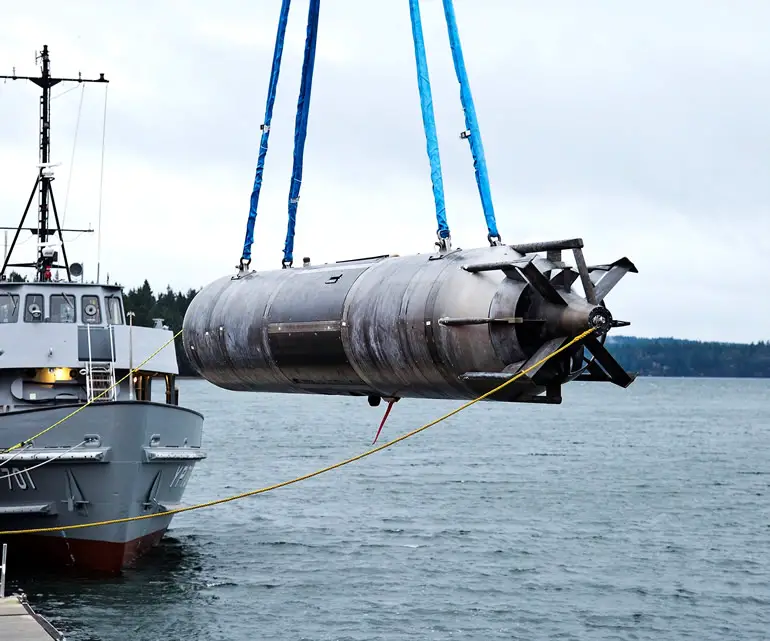The U.S. Navy released a request for proposals (RFP) on December 23 for the design, development, and fabrication of the Naval Sea Systems Command (NAVSEA) Program Executive Office Unmanned and Small Combatants’ Large Displacement Unmanned Undersea Vehicle (LDUUV) program, also known as Snakehead. With this solicitation, the government plans to competitively award a contract to a single vendor for fabrication of two prototype vehicles in fiscal year (FY) 2021. NAVSEA hosted a virtual industry day to brief the LDUUV program on June 16-17. Representatives from more than 50 companies took part via teleconference in support of the solicitation. Feedback from the industry day was incorporated in a draft RFP that was issued on Oct. 29.
The Snakehead Large Displacement Unmanned Underwater Vehicle (LDUUV) is a new class of large-displacement unmanned undersea vehicles that will provide increased endurance, range and payload capabilities deployed from submarine large open interfaces, with the capability to deploy reconfigurable payloads. It is the largest UUV intended for hosting and deployment from submarines, and has been designated a Maritime Accelerated Acquisition. The LDUUV will achieve full integration with Modernized Dry Deck Shelter and Payload Handling System-equipped submarines. Initial vehicles will be designed to support Intelligence Preparation of the Operating Environment (IPOE) missions. Future vehicle missions may include deployment of various payloads. Additional industry feedback was considered to inform the final RFP.
The LDUUV is a pier- launched and recovered UUV (without the need for ship-launch or recovery) with the capability to transit in the open ocean and conduct over-the-horizon missions in littoral waters. This system will enable the extension of Navy platform sensing capability over the horizon and extend its influence. The creation of this UUV is intended to act as a significant force multiplier for the US Navy and will help close Warfighter gaps in a cost-effective manner. LDUUV will be capable of being stowed, launched and recovered by multiple-host platforms, including littoral combat ships, Virginia-class submarines and Ohio-class guided-missile submarines. The craft is being developed by the Unmanned Maritime Systems Program Office, which is part of the Program Executive Office Littoral Combat Ships (PEO LCS).
On 29 October 2020 the Draft RFP has been posted on the Bidder’s Library. Potential Offerors interested in viewing any of the data associated with the LDUUV RFP must complete and return 1) a Terms of Use Agreement; and 2) a Security Classification Specification, DD 254 (Block 6.a., 6.b. and 6.c.). The LDUUV RFP documents (including draft release of documents), Bidder’s Library, and communications with industry (including Industry engagement) contain controlled information. Offerors must be active DoD contractors to access the data within the draft RFP. A blank Terms of Use Agreement and DD 254 were attached to this synopsis. Offerors should complete and return both documents now in order to expedite the review of the draft RFP documents.












